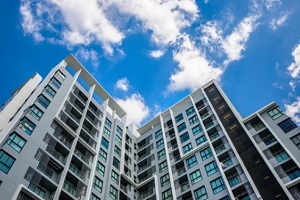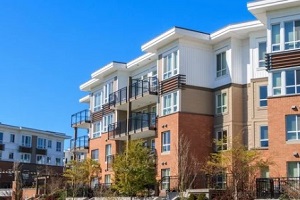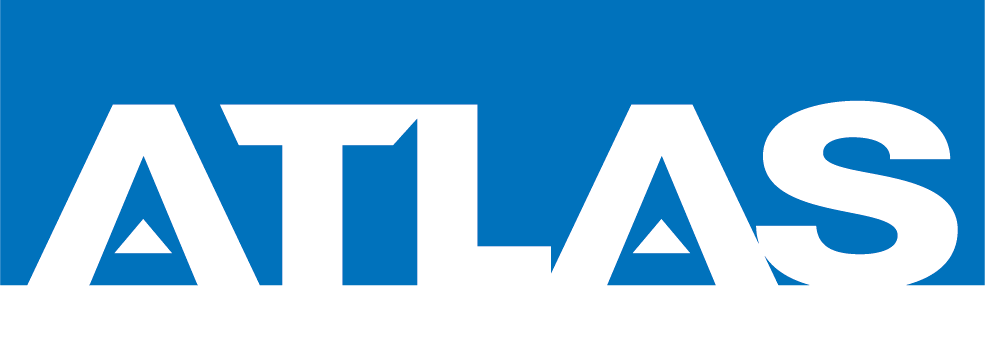 Condominium living is a popular option for many individuals and families that seek short commutes and access to modern amenities. Unlike traditional homeownership in which the homeowner is responsible for maintaining both the structure and property, living in a condo puts responsibilities such as snow removal and lawn maintenance in someone else’s hands.
Condominium living is a popular option for many individuals and families that seek short commutes and access to modern amenities. Unlike traditional homeownership in which the homeowner is responsible for maintaining both the structure and property, living in a condo puts responsibilities such as snow removal and lawn maintenance in someone else’s hands.
While homeowners purchase homeowners insurance to protect their property, condo owners purchase condo insurance. Individual condo insurance is similar to a homeowners insurance policy in that it protects the interior of the home and its contents.
Condo association insurance, on the other hand, covers everything outside of your unit, such as the building’s exterior structure and common areas, such as lobbies and hallways.
The cost of a condo association insurance policy is typically included in the monthly dues that members pay to the association. Condo owners are given equal access to the facility’s common areas, which means that they are equally responsible for the cost to insure them.
It is important for new condo owners to understand what a condo association insurance policy covers and why condo residents are required to contribute.
What are the Primary Types of Condo Association Insurance?
Condominium insurance is more complex than homeowners insurance as there are multiple units involved and common areas shared by all residents. To achieve comprehensive coverage, condo association insurance is typically found in three types:
- Bare Walls-In Policy: A bare walls-in policy is the least inclusive type of policy and covers the exterior framing of the structure, in addition to all collectively owned structures and items. It does not cover fixtures and appliances inside the condo.
- All-Inclusive Coverage Policy: An all-inclusive coverage policy covers all repairs required to return a unit to the state it was in before suffering property damage, including fixtures, appliances and other improvements needed to the structure.
- Single Entity Coverage Policy: A single entity coverage policy typically covers all property that is contained in the complex, with the exception of the condo owner’s personal property, such as furniture. It does cover fixtures and appliances but does not cover renovations or improvements made by the owner.
What Is Covered in a Condo Association Insurance Policy?
 Similar to other types of structures, condo buildings are susceptible to property damage due to events theft, vandalism, fires and storms. Condo association insurance provides residents with liability coverage and property damage coverage for the structure, the grounds and common areas.
Similar to other types of structures, condo buildings are susceptible to property damage due to events theft, vandalism, fires and storms. Condo association insurance provides residents with liability coverage and property damage coverage for the structure, the grounds and common areas.
Areas of coverage under a standard condo association insurance policy include:
1. Building Property
Condo association insurance covers the condo building itself, including its walls and fixtures. While individual residents are responsible for damage to the insides of their units, condo association insurance is designed to protect the rest of the building, including the exterior. For example, if the exterior of the building is damaged during a natural disaster, condo association insurance would likely cover the cost of repairs.
2. Liability Protection
Legal expenses can quickly accumulate due to unexpected claims or lawsuits. If a person falls, slips or is otherwise injured on the grounds or in a common area of the building, such as a lobby, the person may decide to sue. A condo association insurance policy can provide residents with liability coverage to protect against such incidents.
3. Common Area Losses
Depending on the size of the condo, there may be minimal common areas, such as a small lobby, or more extensive common areas, such as expansive tennis courts, swimming pools, and bike trails. A condo association insurance policy can help cover losses that occur in common areas. However, it is important to remember that coverage typically has specifical limitations.
What Is Not Covered in a Condo Association Insurance Policy?
Residents of condominium complexes are responsible for purchasing additional insurance coverage for areas of the property not covered by condo association insurance. While each policy is unique, most standard condo association insurance policies do not cover the following:
 Personal Belongings: Although some condo association insurance policies do cover larger possessions such as wall and floor coverings and large appliances, most do not cover other personal possessions. This could include furniture, small appliances, clothing, jewelry and electronics.
Personal Belongings: Although some condo association insurance policies do cover larger possessions such as wall and floor coverings and large appliances, most do not cover other personal possessions. This could include furniture, small appliances, clothing, jewelry and electronics.- Personal Liability: If someone is injured or suffers a loss outside of an individual unit, the condo association insurance policy would generally cover these losses. However, if a loss occurs inside a particular unit, the condo owner may be responsible for any legal claims or associated expenses.
Request an Insurance Quote Today from Atlas Insurance Agency
Money paid to a condo association helps cover all of the amenities that members enjoy and share. Condo association insurance is required to protect these amenities against common losses and liabilities.
Our insurance experts understand the importance of having condo association insurance protection in Hawaii. For more information about what a condo association insurance policy covers or to request an insurance quote, contact Atlas at (808) 400-6634.
